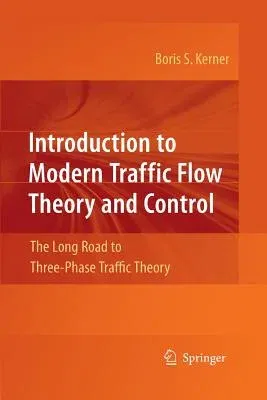The understanding of empirical traf?c congestion occurring on
unsignalized mul- lane highways and freeways is a key for effective
traf?c management, control, or- nization, and other applications of
transportation engineering. However, the traf?c ?ow theories and models
that dominate up to now in transportation research journals and teaching
programs of most universities cannot explain either traf?c breakdown or
most features of the resulting congested patterns. These theories are
also the - sis of most dynamic traf?c assignment models and freeway
traf?c control methods, which therefore are not consistent with features
of real traf?c. For this reason, the author introduced an alternative
traf?c ?ow theory called three-phase traf?c theory, which can predict
and explain the empirical spatiot- poral features of traf?c breakdown
and the resulting traf?c congestion. A previous book "The Physics of
Traf?c" (Springer, Berlin, 2004) presented a discussion of the empirical
spatiotemporal features of congested traf?c patterns and of three-phase
traf?c theory as well as their engineering applications. Rather than a
comprehensive analysis of empirical and theoretical results in the ?eld,
the present book includes no more empirical and theoretical results than
are necessary for the understanding of vehicular traf?c on unsignalized
multi-lane roads. The main objectives of the book are to present an
"elementary" traf?c ?ow theory and control methods as well as to show
links between three-phase traf?c t- ory and earlier traf?c ?ow theories.
The need for such a book follows from many
commentsofcolleaguesmadeafterpublicationofthebook"ThePhysicsofTraf?c".


